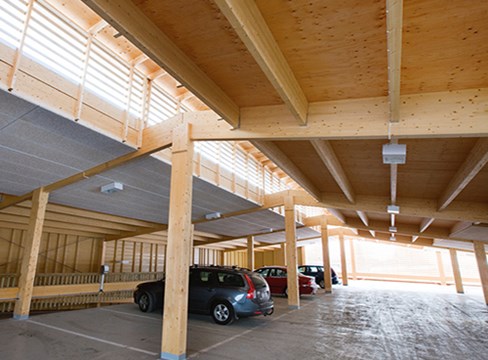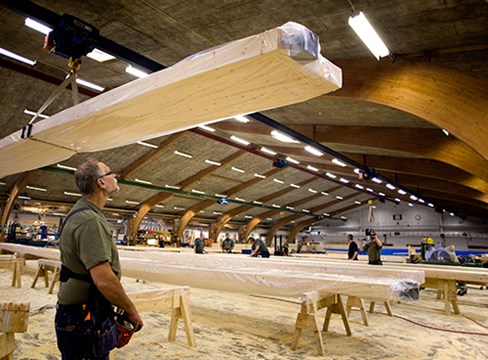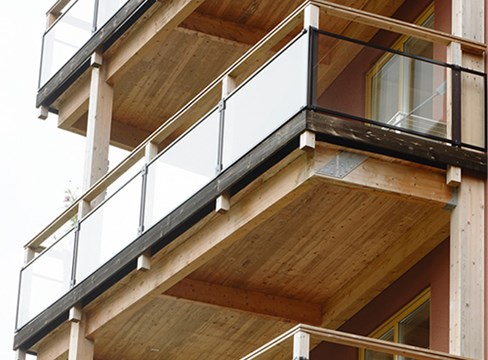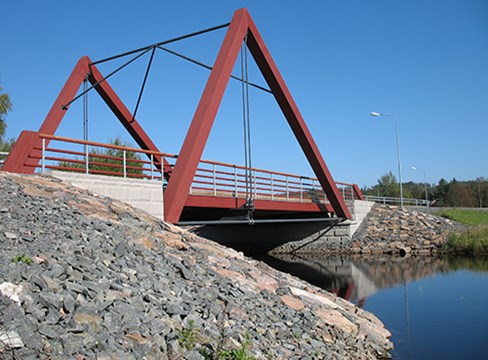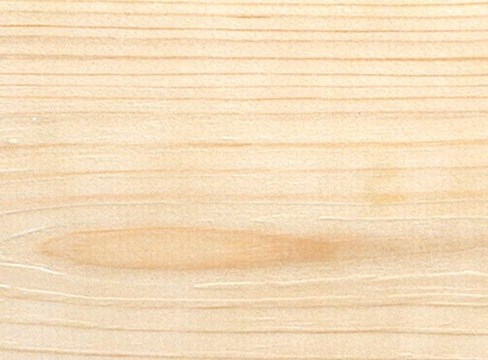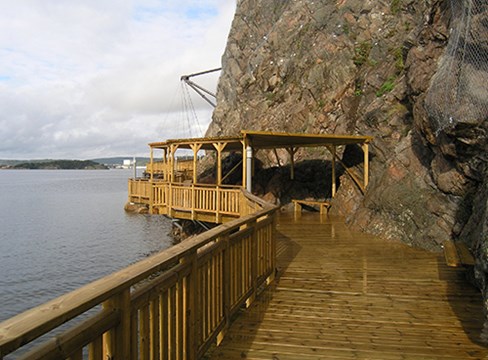Surface treatment
In order to maintain an attractive appearance, glulam may need surface treatment and maintenance, particularly if the glulam will be exposed outdoors. Many surface treatments provide short-term protection against absorption and loss of moisture. Surface treatments also combat deformation and cracking. Some surface treatments offer additional protection against microbial attack. The paint manufacturers can provide detailed information on the various methods of surface treatment and maintenance. Below is a summary of more general advice.

Cable-stayed bridge for pedestrians and cyclists, Skellefteå.
Photo: Oliver Marklund.
In terms of its composition, a surface treatment can be divided into film-forming and non-film-forming:
- Film-forming surface treatments include translucent coatings, opaque paint and clear varnishes.
- Non-film-forming surface treatments include wood stains, unpigmented oils and chemical surface treatments such as iron sulphate.
A film-forming surface treatment makes the surface easier to clean and protects against mechanical damage. There are certain opaque paints and clear varnishes, known as fire retardant paints, which combat the spread of flames and development of smoke in a fire.
Glulam can be surface treated using the same products and methods as for ordinary wood. The choice is determined by the technical and aesthetic considerations in the individual case.
Glulam is usually delivered from the glulam manufacturer with a moisture content of no more than the target moisture content, 16%. When encasing the glulam, its surface moisture content should be max 18%. When painting the glulam, its surface moisture content should be max 16%.
Glulam indoors – surface treatment advice
- In normally heated premises, glulam requires no surface treatment unless a colour other than the glulam’s natural yellow-white is required. In this case, any of the same surface treatments that are used on ordinary wood may be applied – opaque paint, translucent coatings, wood stain, clear varnish or oil. When maintaining surface treatments, as a rule of thumb use the same type of surface treatment as was originally used.
- In areas subject to damp conditions, such as indoor swimming pools and wet rooms or other premises with a risk of condensation, the recommendation is to restrict the use of finishes that require extensive preparation during maintenance, such as opaque paints and varnishes. Instead, choose a suitable wood stain or oil, both of which are easier to maintain.

Tomtebo forest sauna, Gävle, winner of the Swedish Timber Prize 2012. Architect: Meter Arkitektur, Bengt Mattias Carlsson.
Photo: Bengt E:son Lindman.
Glulam outdoors – surface treatment advice
- Untreated glulam and glulam treated with an unpigmented finish (unpigmented wood oil) turns grey after a period of outdoor exposure. An untreated wood surface or a poorly maintained surface treatment can allow damp penetration from rain, wet snow, meltwater and splashes, which in the long term can lead to discolouration and cracking.
- The most significant deteriorating factors in outdoor exposure are sun, rain, wet snow and ground moisture. Weather that alternates between rain and sun puts serious stresses on exposed surfaces outdoors. Glulam should be protected against rainfall.
- Exposed to the sun’s rays, a surface can quickly reach a high temperature – dark surfaces may reach upwards of 70°C. This causes severe surface drying and movement, which carries a risk of the surface gradually beginning to crack.
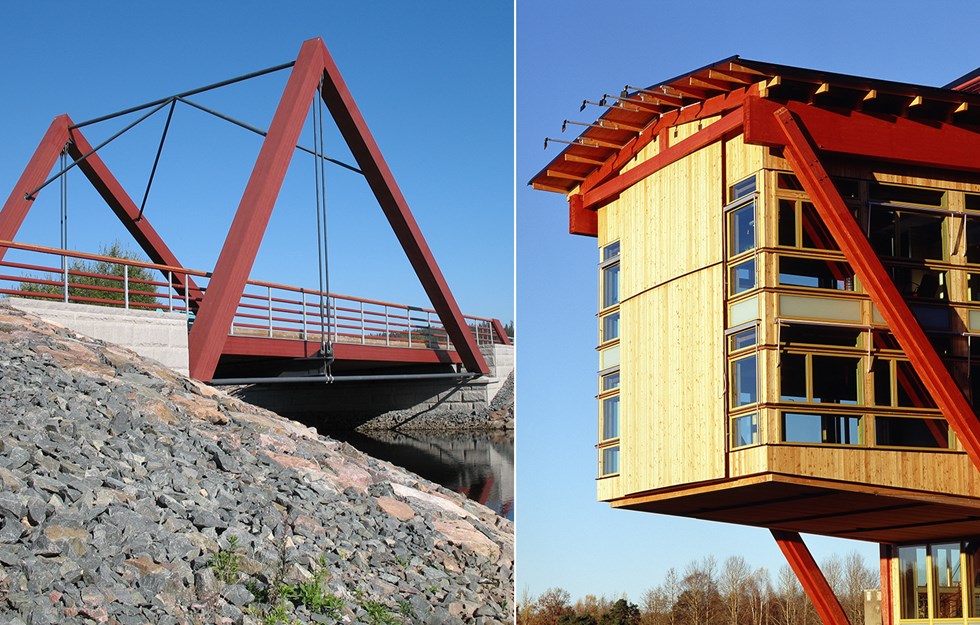
Truss bridge for road traffic, Virserum. Photo: Per Bergkvist.
Concrete and wood floor structure, other structural parts in glulam. Office block, Växjö. Photo: Ole Jais.

